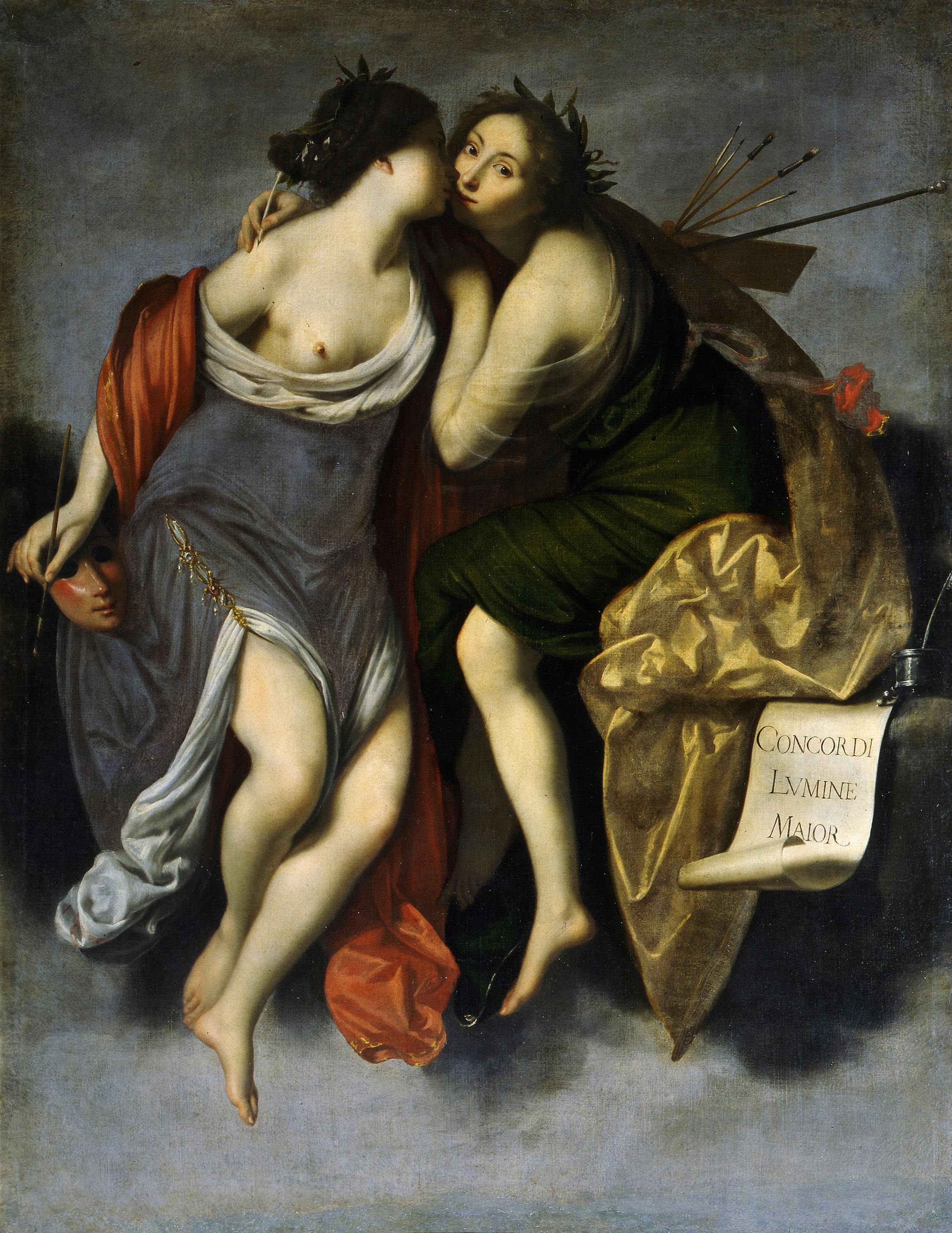Painting and Poetry
Francesco Furini (Florence 1603 - 1646)
''FRANCISCUS FURINUS FACIEBAT 1626'' (on the trim of the yellow drape); ''CONCORDI LUMINE MAIOR'' (on the scroll).
The allegorical figures of Painting and Poetry represent the famous theme explored by Horace in Ars Poetica. The concept of UT PICTURA POËSIS (“so in painting as in poetry”) is expressed by Furini in the Sapphic kiss and embrace of the two figures, arranged almost symmetrically, and in the interplay of gestures which visually represent the mutual relationship between the two sister arts. Painting, depicted on the left, holds a palette and brushes in one hand, tools for art as the imitator of nature, and a mask in the other, a reference to the imitation of human actions. Poetry, on the right, holds a quill, while the inkwell sits atop the scroll signed with the motto CONCORDI LVMINE MAIOR. This motto was coined by Furini himself and aims to emphasize the Horatian concept of unity between the two arts, serving as a reminder that both painting and poetry are of greater quality when seen in the same light.
The painting was correctly attributed to Francesco Furini only a few decades ago, thanks to the discovery of the signature almost completely hidden in the hem of the yellow robe worn by Poetry. The work, dated in 1626, was commissioned by the prestigious Accademia del Disegno in Florence to mark the celebrations of its patron saint, Saint Luke, in 1624. The painting met with such appreciation as to earn the painter membership of the institution, and inspired a second version of the subject by Galileo Galilei. Indeed, the work represents a fundamental moment of Furini's career, highlighting his maturing style in the context of Florentine painting in the early seventeenth century.
